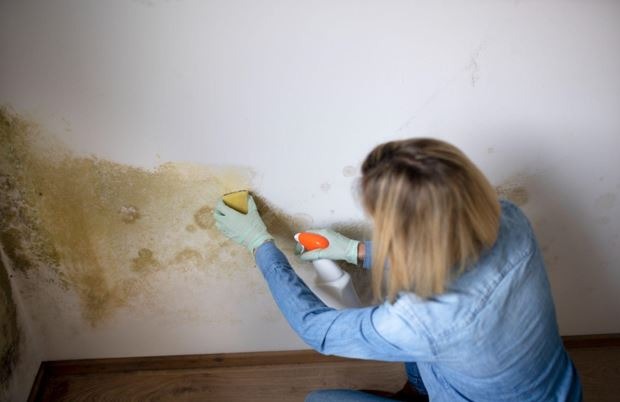Mildew is a common fungi that can grow in humid, dark conditions, if left untreated it can wreak havoc on whatever surface it contaminates. But thankfully there are ways to get rid of mildew, depending on which surface you’ve found the mildew will dictate how you tackle it.
Mildew can be removed using standard household cleaning products, but if you believe your mildew has gone beyond the threshold of household cleaners you can also get a hazardous material assessment to see what options are the best for your situation.
The Difference Between Mold and Mildew
Mould and mildew are two different types of fungi that have similar beginnings since they grow in damp, dark spots. Mould is fuzzy and dark, while mildew is flat and powdery. Mould can appear in any colour, but usually in household settings it’s usually brown, green or black. While mildew on the other hand, tends to be white, grey or yellow.
Similar to mould, mildew can cause itchy skin rash, worsen asthma and coughing and produce other symptoms such as inflammation, joint pain and sneezing. It’s important to use precautions when removing mildew, wearing rubber gloves and a face mask is necessary.
How to Get Rid of Mildew
Mildew removal can differ depending on which type of surface you’re working on. Most removal techniques will require a little elbow grease and time. Another factor to keep in mind is how widespread the growth has become. You may need to repeat the cleaning method several times until the mildew is completely gone.
On Wood Furnishings
If you have mildew on your wood furnishing, the best removal is to dissolve 2 tablespoons of washing soda (not baking soda) into 2 cups of warm water. Use a sponge or a spray bottle to apply this solution and then scrub with a soft brush. After rinse the area with fresh water and pat it dry with a clean cloth.
If the mildew has worked beneath the varnish or paint, you’ll need to sand down the finish first.
On Tile and Grout
Spray diluted hydrogen peroxide (about 3% will do) directly onto the tile or grout. Let this sit on the surface for 10 minutes, and then scrub well with a brush or sponge. Rinse the area thoroughly with warm water. If you have stubborn mildew stains, use a homemade grout cleaner.
On Fabric and Clothing
For washable fabrics, it’s best to wet the affected fabric with water and then add a few drops of dish detergent along with a sprinkle of baking soda or salt. Work the fabric after by rubbing it together with your hands to really get it into the fabric, wash it after on the hottest setting allowed by the care label. For lighter fabrics, add ½ cup of bleach and non-chlorine bleach for colours or darker fabrics.
For non-washable fabrics, brush away as much mildew as you can then hang the fabric outside in bright sunlight so the sun’s UV rays can eliminate any remaining spores and mildew smell.
On Carpet
Sprinkling baking soda on carpet and then spritizing it with water and white vinegar will remove mildew stains. The fizzing action will lift the mildew stains. Once the fizzing has stopped, you can then dab the area with a clean, dry cloth and aim a fan at it to help it dry. Once completely dry, you can vacuum any remaining debris.
If you have mildew odours on your carpet or area rugs, you can use a carpet deodorizer to absorb moisture.
On Upholstery and Furniture
Begin by using a vacuum cleaner to remove as much mildew as possible. Follow up with combining equal parts of rubbing alcohol and water. Sponge the affected upholstery with the same mixture and then let it air dry. If you’re worried about the colour, do a spot test to ensure that the colour won’t be affected.
How To Prevent Mildew
Once you’ve removed mildew from whichever surface it infested. There are a couple ways to keep it from returning. It’s important to inspect for excess moisture, reduce the amount of humidity and improve air circulation.
Inspect Damp Areas Often
Keep areas where mildew is likely to grow clean and dry. This includes checking beneath sinks and behind toilets and washing machines. Keep an eye on any areas that may have moisture such as your foundation or any drips or leaks.
Keep Humidity in Check
Add silica gel packets to any musty drawers or cabinets. For closets, you can hang bags of calcium chloride to absorb any moisture and damp odours. A dehumidifier with a humidity sensor can be good in damp basements or laundry rooms, just remember to keep an eye on them.

